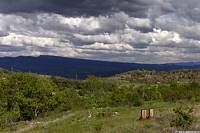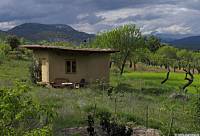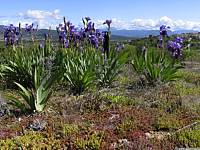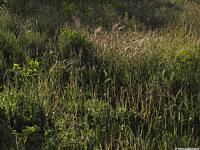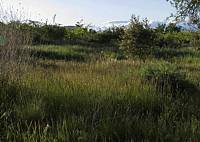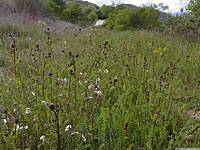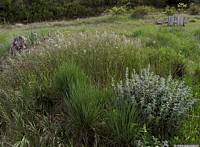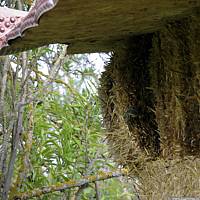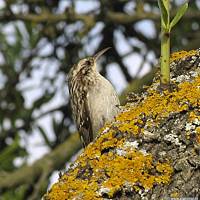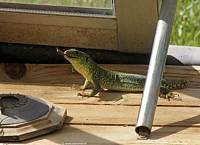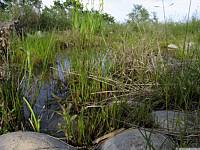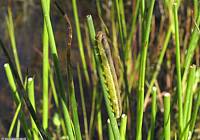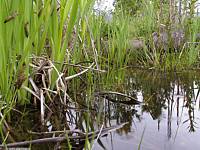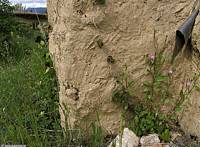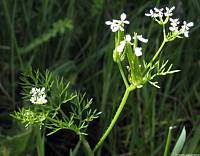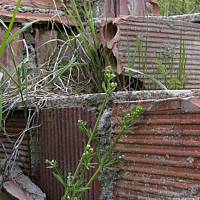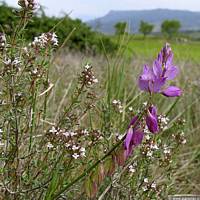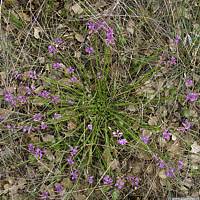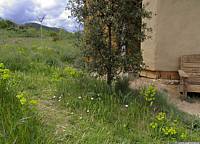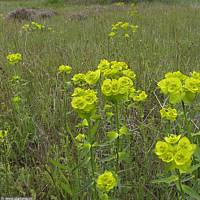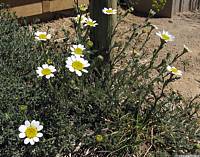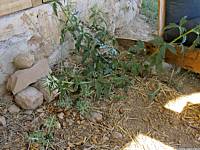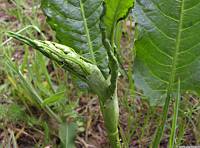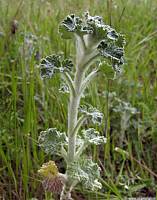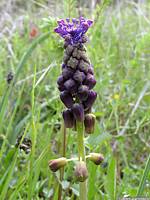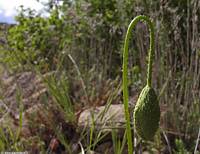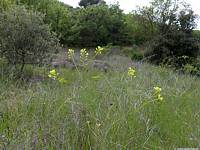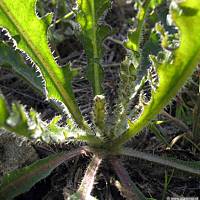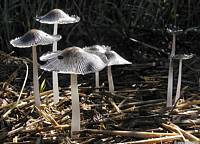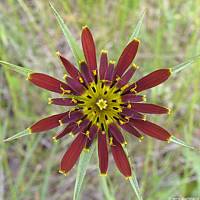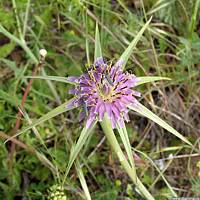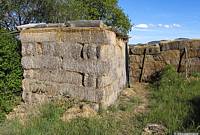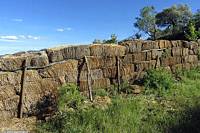|
|
Nature Switched On
|
|
|
introduction |
2012 April 29 to May 15 (News)
Overcast skies alternate regularly
with clear ones and with maximum temperatures oscillating around
20ºC, the weather of the last few weeks has been quite agreeable; a bit more rain would have made it perfect.
|
|
|
An impressive layer of clouds,
looking east. 29 Apr 17:17 |
||
|
The blue Iris germanica on the roof is flowering as never
before. On the contrary and quite mysteriously, the same species on
the ground flowered extremely poorly this year. 8 May 17:53 |
They have only 6cm soil available on the roof but Iris
germanica seems to feel very at (or better: on) home. |
|
|
It is extremely difficult to capture the beauty of the field with a
camera lens. It is simply too subtle and complex. So bear in mind
that the
following pictures give only a remote idea of the actual splendour
of the vegetation.
|
||
| Back
lighting is often an option to appreciate a photograph of a field
full of complex structures and shades, here in
the 'front yard'. 6 May 20:04 |
One of the most beautiful areas
at the moment in our 'front yard' but the camera is unable to
capture the subtleties and movements of the Poa pratensis
spot in the centre. 6 May 20:05 |
|
|
Sanguisorba minor is the most frequent species on many parts. It is supposed to be edible but we find it bitter, perhaps it is another subspecies. 8 May 17:23 |
A nice spot near the ponds, with
Marrubium vulgare on the right, Dactylis glomerata
in the centre and Bromus diandrus on the left and in the
background. 8 May 17:44 |
|
|
Photographing birds offers another kind of challenge and it's not my speciality but his Treecreeper (Certhia brachydactyla) was irresistible. It had made a nest in the northern straw bale wall of our compost toilet building and when we approach it, it sits cheekily just in front of us at less than a metre distance and the next moment it hides behind the almond tree trunk. Everything of course to attract our attention away from the nest.
Much more slowly in its movements is this Ocellated lizard (Timon lepidus), except when it attacks its prey, in this case a Dragonfly we fed. To put things straight: the insect was already heavily handicapped (and so was the lizard by the way).
|
||
The Short-toed treecreeper playing hide and seek on an almond
trunk. |
|
|
| The
Ocellated lizard swallowing a Dragonfly in the windowsill of the
greenhouse. The tail on the photo seems to be on the wrong end! 14 May 10:57 |
||
|
In the upper pond I had noticed for some time the nibbled stems of
the Juncus effusus which proliferates there, as if some
herbivore, like a rabbit, had grazed on them. On closer inspection I
detected ma
Another noteworthy event is the massive 'landing' of dragonfly larvae especially on the Yellow flag stems. At the moment when the photo on the right was taken, I counted at least 50 larvae and on subsequent days many others followed. In former years this exodus was never so massive and this year's result might be caused by the fact that it was the first time that I didn't let this pond dry up last summer. |
||
|
Close-up of the Dolerus caterpillar on Juncus. |
Juncus effusus
heavily eaten by the caterpillar. The Juncus is quite
imperialistic so some grazing is welcome. 14 May 18:34
|
|
|
Exodus from water, via land to
air. On the extreme right an Aeshna species has just become a dragonfly. 8 May 9:14 |
||
|
Four species were added to the Floristic catalogue:
- Epilobium parviflorum (Smallflower Hairy Willowherb): last year already present but I thought it wouldn't make it on the hot and dry south side of the greenhouse. It was probably introduced with the purchase of the Virginia creeper in the same spot.
|
||
| 8 May 16:35 | ||
| 6 May 12:06 | ||
| 8 May 17:13 | ||
|
Typical star-like growth-form of Polygala
species. Lowest terrace. 12 May 10:42 |
Polygala nicaeensis. Lowest terrace, looking north. 12 May 10:57 |
|
|
Around the house year after year there is a specific vegetation
developing. Important ambient conditions are of course the trampling
|
||
|
The abundantly flowering Euphorbia cyparissias is quite
sturdy and comes quite near the house. 8 May 16:37
|
This 'aerial' photo, taken while holding a tripod in the air,
gives a nice impression of the lighter green area around the house
of Hordeum murinum speckled with the white flowers of
Anthemis arvensis.
Anthemis arvensis needs some trampling to flower so
joyfully. |
|
| The intriguing greenish yellow colour of the fake flowers of Euphorbia cyparissias speckles the field nicely. The plant seems to be too aggressive for smaller gardens. May 16:56 | ||
|
Not that sturdy but still growing especially near the house
with a number of plants: Rumex conglomeratus |
This area doesn't receive any
water whatsoever but three champion species can still use
their deep roots from the time the house wasn't there: Eryngium
campestre (l), Althaea cannabina (r) and
Chondrilla juncea (c). 15 May 17:32 Like the Rumex, this Marrubium vulgare doesn't tolerate too much trampling but nevertheless seems to seek refuge near the house. 8 May 16:48 |
|
|
The following is
|
||
|
The exotic Muscari comosum manages every year to come up
with several specimen; this year I counted 8. 8 May 16:19 |
The flower bud of Papaver rhoeas seems too heavy ever to be lifted up but the next day it started flowering. 8 May 17:30 | |
|
The flowers on Biscutella
laevigata grow as sparse as the species in the zone. 8 May 17:17 |
||
|
The hairy rosettes of Picris hieracioides are
preparing to launch the central stalk. 6 May 19:12 |
The Coprinus fungus may 'flower' on straw in the (half) shade
any time of the year after some rainfall.
|
|
|
The following two flowers are supposed to be of the same species: Tragopogon porrifolius. The first one is clearly the subspecies australis but the latter one seems to be an intermediate form approaching the subspecies porrifolius, formerly much cultivated under the name Salsify. |
||
|
Tragopogon porrifolius subsp. australis. 14 May 9:41 |
Tragopogon porrifolius subsp.
porrifolius. 14 May 9:39 |
|
|
The bales of the 'transformer' house, under the fibre glass sheet and some straw and trunks, are in excellent condition and my estimation is they will last at least 15 years. 7 May 18:14 |
My idea was that planted and spontaneous shrubs and trees would progressively substitute the wall but this is going slower than expected. Nevertheless the bales under the plastic sheet maintain a reasonable good condition and could survive perhaps another four years. |
The prospect of the straw bale wall is less promising but I hope it will be long enough for the spontaneous and planted shrubs and trees to take over. 7 May 18:13 |
|
introduction
|
|
